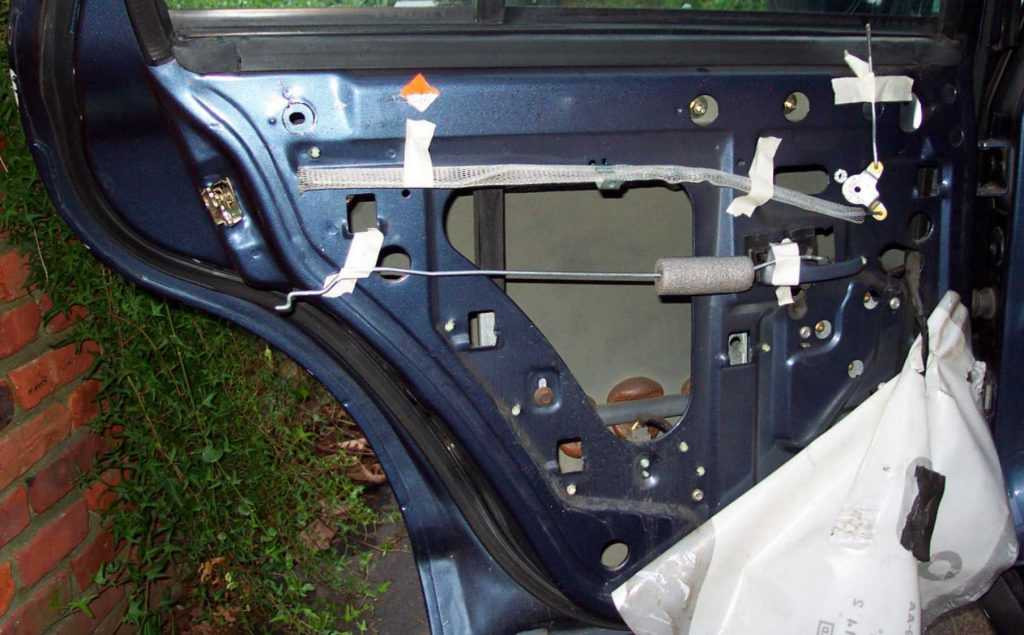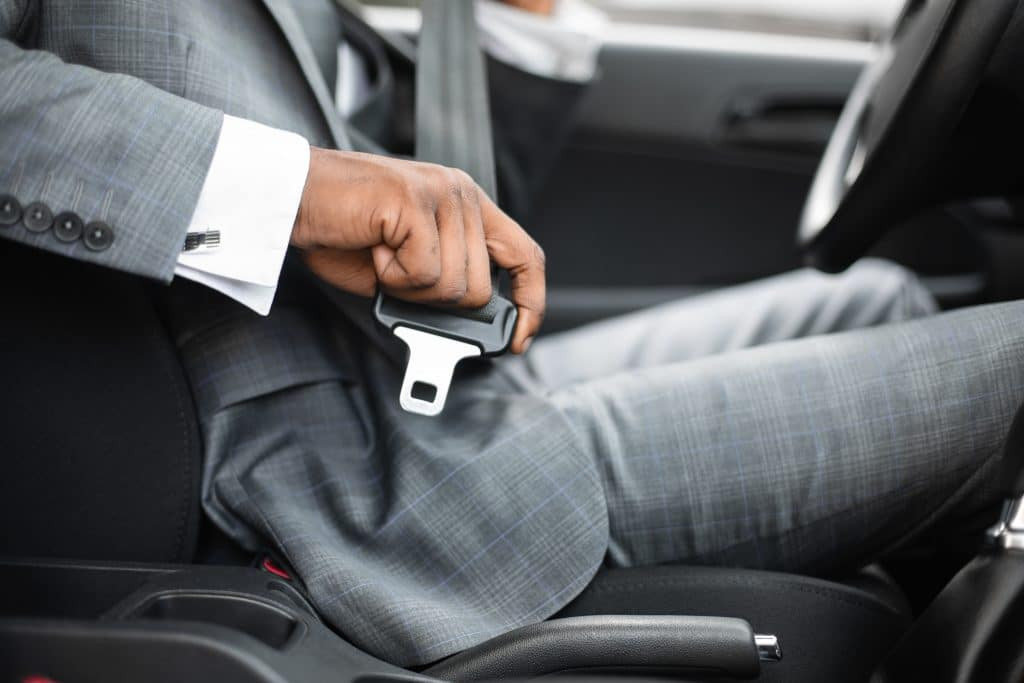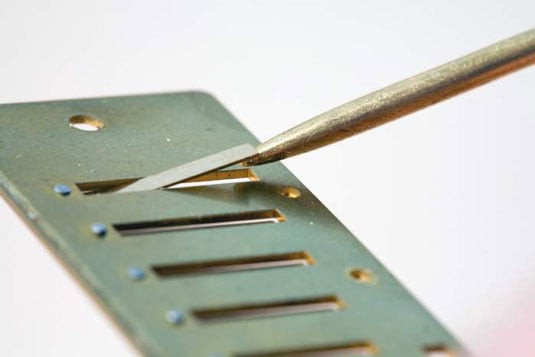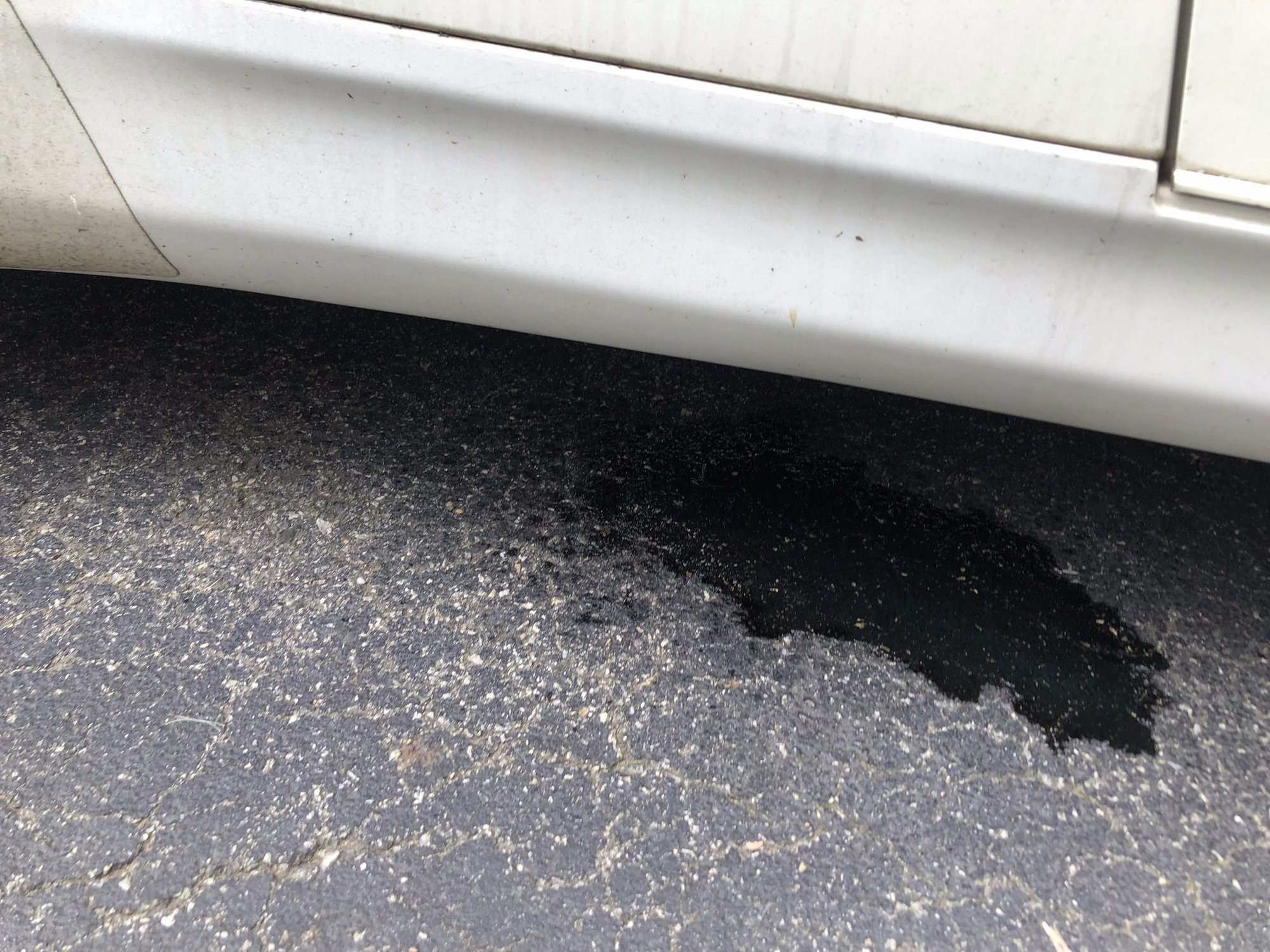Can Dents Be Fixed on Cars? Repair Options & Costs
Can dents be fixed on cars, restoring their pristine condition and value? Absolutely, and CARDIAGTECH.NET is here to guide you through the various methods and solutions available, from DIY techniques to professional services, ensuring your vehicle looks its best with top-notch auto repair tools. Discover effective dent removal and car body repair options that will keep your vehicle looking its best and maintain its value.
1. Understanding Car Dents and Their Causes
What causes dents in cars, and what types of damage are common? Dents in cars can arise from various everyday incidents, from minor incidents like hail and shopping carts to more significant impacts such as car accidents.
- Hail Damage: Hailstorms can leave numerous small dents across your car’s surface.
- Shopping Carts: Uncontrolled shopping carts in parking lots can easily collide with vehicles.
- Door Dings: These occur when doors hit adjacent vehicles or objects in tight parking spaces.
- Accidents: Collisions with other vehicles or stationary objects often result in larger, more severe dents.
- Falling Debris: Branches, rocks, and other falling items can cause significant dents and structural damage.
These incidents not only affect the appearance of your vehicle but also potentially decrease its resale value and can lead to further issues like rust if the paint is damaged. Timely repair is essential to maintaining your car’s integrity and aesthetic appeal, and CARDIAGTECH.NET offers tools and equipment to address these issues promptly.
2. Types of Car Dents
What are the different types of car dents, and how do they vary in repair complexity? Car dents come in various forms, each requiring specific repair techniques. Understanding these differences is crucial in determining the appropriate course of action. Here’s a breakdown:
| Type | Description | Repair Complexity |
|---|---|---|
| Ding | A small, shallow indentation usually caused by minor impacts. | Simple DIY repair methods often suffice. |
| Round Dent | A circular indentation, often resulting from objects like balls or blunt impacts. | Can often be “popped” back into shape with specialized tools. |
| Sharp Dent | A small but deep indentation, typically caused by sharp objects. | More challenging to repair, often requiring professional tools. |
| Crease Dent | A long, folded dent often accompanied by paint damage. | Requires professional attention to ensure proper alignment and paint restoration. |
| Serious Dents | Large or multiple dents, potentially indicating structural damage and compromising vehicle safety. | Necessitates professional assessment and repair due to potential underlying issues. |
Understanding the type of dent helps determine the best approach for repair, whether it’s a simple DIY fix or requires the expertise of a professional. With CARDIAGTECH.NET, you can access the tools and information needed to tackle various dent types effectively.
3. Why Timely Dent Repair is Crucial
Why is it important to fix car dents promptly? Repairing dents quickly is crucial for several reasons, extending beyond mere aesthetics. Delaying repairs can lead to more significant issues, impacting both the vehicle’s value and safety.
3.1. Preventing Rust and Corrosion
How do dents lead to rust, and why is it a concern? When a dent damages the paint, it exposes the metal underneath to moisture and air, accelerating rust formation. Rust not only degrades the appearance of the vehicle but also weakens its structural integrity.
3.2. Maintaining Structural Integrity
Can dents affect the car’s structural integrity? Larger dents, especially those caused by significant impacts, can compromise the structural integrity of the car. This is particularly concerning in areas crucial for safety, such as the frame or support beams.
3.3. Preserving Resale Value
How do dents impact the car’s resale value? A vehicle with numerous or significant dents typically fetches a lower price on the resale market. Prospective buyers often view dents as signs of neglect or potential underlying issues, leading to reduced offers.
3.4. Ensuring Safety
Why is dent repair important for safety? Dents, especially those resulting from accidents, may affect the functionality of safety features such as airbags or crumple zones. Repairing these dents ensures that the vehicle’s safety mechanisms operate as intended.
3.5. Improving Fuel Efficiency
Do dents affect fuel efficiency? While less obvious, dents can disrupt the aerodynamics of a vehicle, leading to increased drag and reduced fuel efficiency. Repairing dents helps restore the vehicle’s original aerodynamic profile, optimizing fuel consumption.
Addressing dents promptly mitigates these risks and preserves the overall condition, safety, and value of the vehicle. With CARDIAGTECH.NET, you gain access to tools and solutions that facilitate timely and effective dent repairs.
4. DIY Car Dent Repair: Methods and Tools
What are the common DIY methods for fixing car dents, and what tools are needed? For minor dents and dings, several DIY methods can be effective. These approaches are cost-effective and can be completed at home with the right tools.
4.1. Plastic Bumper Repair
How can dents in plastic bumpers be repaired at home? Plastic bumpers are generally more flexible, making dent removal easier. Here’s a step-by-step guide:
-
Heat Application: Use a hairdryer to warm the dented area until it becomes pliable. This may take several minutes, so be patient and keep the hairdryer moving to avoid overheating any single spot.
-
Cooling: Spray the warmed area with compressed air or use a cold, damp cloth. The rapid cooling can cause the plastic to contract and pop back into its original shape.
-
Dent Puller: For larger dents, a suction cup dent puller can be used. Attach the puller to the center of the dent and gently pull outward.
-
Smoothing: After the dent is removed, smooth out any remaining imperfections with your hands.
4.2. Metal Dent Repair
What is the process for repairing metal dents using a dent repair kit? Metal dents require a more specialized approach. Here’s how to use a dent repair kit effectively:
-
Heat Application: Similar to plastic repair, use a hairdryer to warm the dented area. This helps to make the metal more malleable.
-
Dent Puller: Use a suction cup dent puller to gently pull the dent outward. This is more effective on shallow dents.
-
Bridge Puller: For deeper dents, a bridge puller is more suitable. This involves gluing a bolt (head) to the deepest part of the dent.
-
Attaching the Bridge Puller: Apply glue to the head and attach it to the dent. Allow it to cool and dry completely, usually for about 4-8 minutes.
-
Pulling the Dent: Attach the bridge puller and turn the dial to slowly move the metal back into place. Stop when the dent is gone and the metal is in its original position.
-
Removing the Head: Remove the bridge puller and use a hairdryer to heat the glue, making it easy to detach the head. Wipe away any remaining glue.
-
Touch-Up: If the paint is damaged, use a paint repair kit to touch up the area. Clean the area, apply primer, and then apply a small amount of paint.
4.3. Using Body Filler
When is body filler necessary, and how is it applied? When a dent cannot be completely removed, body filler can be used to smooth out the surface. This process involves:
-
Cleaning: Clean the dented area with soap and water and dry it with a microfiber cloth.
-
Sanding: Use 80-grit sandpaper to remove paint from the dent and the surrounding area (about 2-5 inches).
-
Dent Reduction: Minimize the dent as much as possible using the above techniques.
-
Applying Body Filler: Press the body filler firmly into the dent, ensuring it is flush with the rest of the vehicle’s body. Let it dry for about 15-20 minutes.
-
Sanding the Filler: Use 80-grit sandpaper to shape the area. Repeat the application and sanding if there are any low spots.
-
Smoothing: Once you are satisfied with the shape, smooth the filler with 180-grit sandpaper.
-
Glazing: Apply glaze and spot putty to cover the filler and surrounding area.
-
Final Sanding: After the glaze has dried, sand with 180-grit sandpaper, followed by 320-grit sandpaper to remove any scratches or lines.
-
Priming and Painting: Use a paint repair kit to prime and paint the vehicle.
4.4. Essential DIY Tools
What tools are essential for DIY car dent repair? Having the right tools can make the dent repair process more efficient and effective. Here’s a list of essential tools available at CARDIAGTECH.NET:
- Hairdryer: Used to heat the dented area, making it more pliable.
- Compressed Air: Used to quickly cool the heated area, helping the plastic to contract and pop back into shape.
- Suction Cup Dent Puller: Used to pull out shallow dents.
- Dent Repair Kit: Includes various tools for pulling and smoothing dents, such as a bridge puller and adhesive tabs.
- Body Filler: Used to fill in dents that cannot be completely removed.
- Sandpaper (80-grit, 180-grit, 320-grit): Used to smooth the body filler and prepare the surface for painting.
- Paint Repair Kit: Includes primer, paint, and clear coat for touching up the repaired area.
- Microfiber Cloths: Used for cleaning and wiping down the area.
With the right tools and techniques from CARDIAGTECH.NET, you can effectively repair minor dents and maintain the appearance of your vehicle.
5. Professional Dent Repair Options
When should you consider professional dent repair services? While DIY methods are suitable for minor dents, larger or more complex damage requires the expertise of professionals. Professional dent repair ensures a high-quality finish and can address underlying structural issues.
5.1. Paintless Dent Repair (PDR)
What is paintless dent repair, and when is it appropriate? Paintless Dent Repair (PDR) is a technique used to remove dents without affecting the vehicle’s paint. It is ideal for dents that are not too deep and do not have significant paint damage.
- Process: PDR technicians use specialized tools to gently massage the metal from behind the panel, pushing the dent back into its original shape.
- Advantages: PDR is a cost-effective and time-efficient option that preserves the original paint finish. It is also environmentally friendly since it doesn’t require the use of chemicals or new paint.
- Suitable Dents: PDR is best for small to medium-sized dents that are not located on the edges of panels or in areas with difficult access.
5.2. Auto Body Shop Repair
When is an auto body shop necessary for dent repair? Auto body shops are equipped to handle more extensive dent repairs, especially those involving structural damage or paint issues.
- Comprehensive Repair: Auto body shops offer comprehensive dent repair services, including dent removal, body filling, sanding, priming, and painting.
- Structural Damage: If a dent is accompanied by structural damage, such as a bent frame or damaged support beams, an auto body shop is necessary to ensure the vehicle is safe to drive.
- Paint Damage: When a dent has damaged the paint, an auto body shop can match the paint color and apply a new finish to seamlessly blend with the rest of the vehicle.
5.3. Mobile Dent Repair Services
What are the benefits of mobile dent repair? Mobile dent repair services offer convenience by bringing the repair shop to your location.
- Convenience: Mobile dent repair technicians come to your home or office, saving you time and hassle.
- On-Site Assessment: Technicians can assess the dent and provide an estimate on-site.
- Quick Repairs: Many minor dent repairs can be completed in a few hours, minimizing downtime.
5.4. Choosing the Right Professional
How do you select a reputable dent repair service? Selecting the right professional for dent repair involves considering several factors to ensure quality service and customer satisfaction.
-
Check Reviews and Ratings: Look for online reviews and ratings to gauge the reputation and reliability of the repair service.
-
Ask for Recommendations: Seek recommendations from friends, family, or colleagues who have used dent repair services in the past.
-
Verify Credentials: Ensure that the technicians are certified and have the necessary training and experience.
-
Get Multiple Estimates: Obtain estimates from several repair services to compare prices and services.
-
Inspect the Facility: If possible, visit the repair shop to assess the cleanliness and organization of the facility.
-
Inquire About Warranty: Ask about the warranty offered on the repair work to ensure that you are covered in case of any issues.
By carefully considering these factors, you can choose a reputable dent repair service that meets your needs and provides high-quality workmanship. CARDIAGTECH.NET can assist you in finding the right tools and resources for either DIY or professional dent repair solutions.
6. Cost of Car Dent Repair
How much does it typically cost to fix car dents? The cost of car dent repair varies widely depending on the size, location, and complexity of the dent, as well as the repair method used. Understanding these cost factors can help you budget appropriately and make informed decisions.
6.1. DIY Repair Costs
What are the typical costs associated with DIY dent repair? DIY dent repair is generally the most affordable option, with costs primarily related to the purchase of tools and materials.
- Tools and Kits: Dent repair kits can range from $20 to $100, depending on the complexity and the number of tools included.
- Body Filler: Body filler typically costs between $10 and $30 per can.
- Sandpaper: A variety pack of sandpaper can cost around $10 to $20.
- Paint Repair Kit: A paint repair kit to match your car’s color can range from $30 to $70.
Overall, DIY dent repair can cost anywhere from $70 to $220, making it a budget-friendly option for minor dents.
6.2. Paintless Dent Repair (PDR) Costs
How much does paintless dent repair typically cost? PDR costs vary based on the size and location of the dent, as well as the accessibility of the area.
- Small Dents: Small, light dents can cost between $50 and $150 to repair.
- Medium Dents: Medium-sized dents typically range from $150 to $350.
- Large Dents: Large dents can cost between $350 and $600 or more.
PDR is often more affordable than traditional auto body shop repairs and can be completed in a shorter amount of time.
6.3. Auto Body Shop Repair Costs
What are the cost factors involved in auto body shop dent repair? Auto body shop repairs are the most expensive option, as they involve more extensive labor and materials.
- Dent Removal: The cost to remove a dent can range from $200 to $1,000, depending on the size and complexity of the dent.
- Body Filler and Sanding: Applying body filler and sanding the area can add an additional $100 to $300 to the cost.
- Painting: Painting the repaired area to match the rest of the vehicle can cost between $200 and $500.
- Structural Repairs: If structural repairs are needed, the cost can easily exceed $1,000.
Overall, auto body shop dent repair can range from $500 to several thousand dollars, depending on the extent of the damage.
6.4. Factors Affecting the Cost
What factors influence the overall cost of dent repair? Several factors can influence the cost of dent repair, including:
- Size and Depth of the Dent: Larger and deeper dents require more time and materials to repair, increasing the cost.
- Location of the Dent: Dents in hard-to-reach areas can be more challenging to repair, leading to higher labor costs.
- Paint Damage: If the paint is damaged, additional costs will be incurred for painting and color matching.
- Vehicle Type: The type of vehicle can also affect the cost, as some vehicles have more complex body panels or require specialized paint.
- Repair Method: The chosen repair method (DIY, PDR, or auto body shop) will significantly impact the overall cost.
6.5. Getting an Estimate
Why is it important to get an estimate before proceeding with dent repair? Before proceeding with dent repair, it is essential to get an estimate from a reputable repair service. An estimate will provide a breakdown of the costs involved and help you make an informed decision.
- Multiple Estimates: Obtain estimates from several repair services to compare prices and services.
- Detailed Breakdown: Ensure that the estimate includes a detailed breakdown of all costs, including labor, materials, and any additional services.
- Warranty Information: Ask about the warranty offered on the repair work to ensure that you are covered in case of any issues.
Understanding the cost factors involved in dent repair can help you budget appropriately and choose the best repair option for your needs. With CARDIAGTECH.NET, you can find the tools and resources needed for both DIY and professional dent repair solutions.
7. Maintaining Your Car to Prevent Dents
What steps can be taken to prevent car dents and maintain its appearance? Preventing car dents is essential for maintaining the appearance and value of your vehicle. Here are some practical steps you can take:
7.1. Parking Strategically
How does strategic parking help prevent dents? Parking in strategic locations can significantly reduce the risk of dents and dings.
- Choose Wide Spaces: Opt for parking spaces that offer ample room on either side of your vehicle.
- Avoid High-Traffic Areas: Steer clear of parking spots in high-traffic areas where shopping carts and other vehicles are more likely to cause damage.
- Park Away from Other Cars: When possible, park in less crowded areas to minimize the risk of door dings from adjacent vehicles.
- Consider End Spots: End parking spots often have more space on one side, reducing the likelihood of dents.
7.2. Using Protective Measures
What protective measures can be used to safeguard against dents? Several protective measures can help shield your car from potential dents.
- Car Covers: Use a car cover, especially when parking outdoors for extended periods, to protect against hail, tree branches, and other potential hazards.
- Door Edge Guards: Install door edge guards to prevent dings when opening doors in tight spaces.
- Bumper Guards: Consider bumper guards to protect against minor impacts in parking situations.
7.3. Regular Maintenance
How does regular maintenance contribute to dent prevention? Regular maintenance not only keeps your car running smoothly but also helps identify and address potential issues before they lead to dents.
- Inspect Regularly: Periodically inspect your car for any signs of damage, such as small dents or scratches, and address them promptly.
- Keep Your Car Clean: Regularly wash and wax your car to protect the paint and make it easier to spot and address any imperfections.
- Trim Overhanging Branches: If you park under trees, trim any overhanging branches that could fall and cause dents.
7.4. Being Mindful of Surroundings
How does awareness of surroundings help prevent dents? Paying attention to your surroundings can help you anticipate and avoid potential hazards.
- Watch for Shopping Carts: Be mindful of shopping carts in parking lots and take precautions to avoid collisions.
- Avoid Parking Near Construction: Stay clear of parking near construction sites where debris and falling objects could cause dents.
- Be Aware of Weather Conditions: Take extra precautions during severe weather conditions, such as hailstorms or high winds, which can cause dents.
7.5. Maintaining a Safe Distance
Why is it important to maintain a safe distance from other vehicles? Maintaining a safe following distance while driving can help prevent accidents that lead to dents and other damage.
- Allow Ample Braking Distance: Ensure that you have enough space to brake safely in case the vehicle in front of you stops suddenly.
- Stay Alert: Pay attention to the vehicles around you and anticipate any potential hazards.
- Avoid Tailgating: Tailgating not only increases the risk of accidents but also reduces your ability to react to sudden stops.
By implementing these preventive measures, you can significantly reduce the risk of dents and maintain the pristine appearance of your vehicle. CARDIAGTECH.NET offers a variety of tools and products to help you protect and maintain your car’s body.
8. Choosing the Right Tools from CARDIAGTECH.NET
How can CARDIAGTECH.NET assist in dent repair with their tools and equipment? CARDIAGTECH.NET offers a comprehensive range of high-quality tools and equipment designed to facilitate effective dent repair, whether you’re a DIY enthusiast or a professional technician.
8.1. Dent Pullers
What types of dent pullers are available at CARDIAGTECH.NET? CARDIAGTECH.NET provides a variety of dent pullers to suit different types of dents and repair needs.
- Suction Cup Dent Pullers: Ideal for shallow dents, these pullers use suction to gently pull the metal outward.
- Bridge Dent Pullers: Designed for deeper dents, bridge pullers use a bridge-like structure to provide leverage and evenly distribute force.
- Slide Hammer Dent Pullers: These pullers use a slide hammer mechanism to apply a more forceful pulling action, suitable for stubborn dents.
8.2. Body Filler and Applicators
What body filler products and applicators are offered by CARDIAGTECH.NET? Achieving a smooth, seamless finish requires high-quality body filler and the right applicators.
- Lightweight Body Fillers: Easy to sand and shape, these fillers are perfect for filling in minor imperfections.
- Fiberglass-Reinforced Fillers: Offering superior strength and durability, these fillers are ideal for larger dents and structural repairs.
- Applicator Kits: These kits include spreaders, mixing boards, and other essential tools for applying body filler evenly and efficiently.
8.3. Sanding Tools and Materials
What sanding tools and materials are available at CARDIAGTECH.NET for dent repair? Proper sanding is crucial for achieving a smooth surface before painting.
- Power Sanders: Orbital and dual-action sanders provide efficient material removal and a smooth finish.
- Hand Sanding Blocks: These blocks offer precision and control for detail work and hard-to-reach areas.
- Sandpaper Assortments: Available in various grits, these assortments ensure you have the right sandpaper for every stage of the repair process.
8.4. Painting Supplies
What painting supplies are available at CARDIAGTECH.NET to ensure a seamless finish? Achieving a seamless paint finish requires high-quality painting supplies and equipment.
- Spray Guns: HVLP (High Volume Low Pressure) spray guns offer excellent paint transfer efficiency and a smooth, even finish.
- Primers: Primers provide a stable base for paint and enhance adhesion.
- Paints: Available in a wide range of colors and finishes, these paints are designed to match your vehicle’s original paint.
- Clear Coats: Clear coats protect the paint and provide a glossy, durable finish.
8.5. Comprehensive Kits
What comprehensive dent repair kits does CARDIAGTECH.NET offer? For convenience and value, CARDIAGTECH.NET offers comprehensive dent repair kits that include everything you need to tackle a variety of dent repair projects.
- DIY Dent Repair Kits: These kits include a selection of essential tools and materials for repairing minor dents at home.
- Professional Dent Repair Kits: Designed for professional technicians, these kits include a wide range of high-quality tools and equipment for tackling more complex dent repairs.
By choosing the right tools and equipment from CARDIAGTECH.NET, you can ensure that your dent repair projects are completed efficiently and effectively.
9. Step-by-Step Guide to Using CARDIAGTECH.NET Tools for Dent Repair
How can CARDIAGTECH.NET tools be used to effectively repair car dents? Repairing car dents effectively requires a systematic approach and the right tools from CARDIAGTECH.NET. Here’s a step-by-step guide to help you through the process:
9.1. Preparation
What preparatory steps should be taken before starting dent repair?
- Clean the Area: Thoroughly clean the dented area with soap and water to remove any dirt, grease, or debris.
- Inspect the Dent: Assess the size, depth, and location of the dent to determine the appropriate repair method and tools.
- Gather Your Tools: Collect all the necessary tools and materials from CARDIAGTECH.NET, including a dent puller, body filler, sandpaper, painting supplies, and safety gear.
9.2. Dent Removal
How can dents be effectively removed using CARDIAGTECH.NET dent pullers?
- Heat the Area: Use a heat gun or hairdryer to warm the dented area, making the metal more pliable.
- Apply the Dent Puller: Depending on the type of dent, use a suction cup puller, bridge puller, or slide hammer puller to gently pull the dent outward.
- Gradual Pulling: Gradually apply force, checking the progress frequently to avoid over-pulling the metal.
- Repeat if Necessary: Repeat the process as needed until the dent is mostly removed.
9.3. Applying Body Filler
How should body filler be applied to ensure a smooth finish?
- Mix the Filler: Follow the manufacturer’s instructions to mix the body filler with the hardener.
- Apply the Filler: Use a spreader to apply the body filler evenly over the dented area, filling in any remaining imperfections.
- Allow to Dry: Allow the filler to dry completely, as per the manufacturer’s instructions.
9.4. Sanding
How can the body filler be sanded to create a smooth surface?
- Rough Sanding: Use coarse-grit sandpaper (e.g., 80-grit) to remove excess filler and shape the area.
- Medium Sanding: Switch to medium-grit sandpaper (e.g., 180-grit) to smooth the surface and remove any scratches.
- Fine Sanding: Finish with fine-grit sandpaper (e.g., 320-grit) to create a smooth, paint-ready surface.
9.5. Painting
How should the repaired area be painted for a seamless finish?
- Prime the Area: Apply a coat of primer to the sanded area to create a stable base for the paint.
- Paint Matching: Ensure the paint matches your car’s original color.
- Apply the Paint: Use a spray gun to apply several thin, even coats of paint, allowing each coat to dry before applying the next.
- Clear Coat: Apply a clear coat to protect the paint and provide a glossy finish.
9.6. Final Steps
What are the final steps to complete the dent repair process?
- Allow to Dry: Allow the paint and clear coat to dry completely.
- Buff the Area: Use a polishing compound to buff the painted area, removing any imperfections and enhancing the shine.
- Clean Up: Clean the surrounding area and inspect the repair to ensure a seamless finish.
By following these steps and using the right tools from CARDIAGTECH.NET, you can effectively repair car dents and restore the appearance of your vehicle.
10. FAQs About Car Dent Repair
Here are some frequently asked questions about car dent repair, designed to provide quick and informative answers.
10.1. Can all dents be fixed?
Can all types of car dents be repaired? While many dents can be repaired, the success of the repair depends on the size, depth, and location of the dent, as well as the extent of any paint damage or structural issues.
10.2. Is DIY dent repair a good idea?
When is DIY dent repair a suitable option? DIY dent repair is a good option for minor dents that do not involve significant paint damage or structural issues. However, for larger or more complex dents, professional repair is recommended.
10.3. How long does dent repair take?
How long does it take to repair a car dent? The duration of dent repair depends on the size and complexity of the dent, as well as the repair method used. Minor dents can often be repaired in a few hours, while larger or more complex dents may take several days.
10.4. Will dent repair affect my car’s paint?
Does dent repair always involve painting? Paintless dent repair (PDR) is a method that repairs dents without affecting the paint. However, if the dent has caused paint damage, painting will be necessary to restore the finish.
10.5. Can dents cause rust?
Can dents lead to rust formation on cars? Yes, dents that damage the paint can expose the metal underneath to moisture and air, leading to rust formation.
10.6. Is it worth fixing a small dent?
Is it economically viable to repair minor car dents? Fixing even small dents is worth it to prevent rust, maintain the car’s appearance, and preserve its resale value.
10.7. Does insurance cover dent repair?
Will insurance cover the cost of dent repair? Whether insurance covers dent repair depends on the terms of your policy and the cause of the dent. Comprehensive coverage typically covers dents caused by hail, while collision coverage covers dents caused by accidents.
10.8. Can heat really remove dents?
Can heat be used to remove car dents? Yes, applying heat to the dented area can make the metal or plastic more pliable, making it easier to pull the dent out. This is often used in conjunction with other repair methods.
10.9. What is the best way to remove a dent from a car?
What is the most effective method for car dent removal? The best way to remove a dent depends on the size, depth, and location of the dent. Options include DIY repair, paintless dent repair (PDR), and auto body shop repair.
10.10. Where can I buy quality dent repair tools?
Where can reliable car dent repair tools be purchased? You can buy quality dent repair tools at CARDIAGTECH.NET, which offers a comprehensive range of tools and equipment for both DIY and professional dent repair.
For expert advice and the best tools for your car dent repair needs, contact CARDIAGTECH.NET today. Our knowledgeable team is ready to assist you in selecting the right equipment and providing guidance to restore your vehicle’s appearance and value.
Address: 276 Reock St, City of Orange, NJ 07050, United States
WhatsApp: +1 (641) 206-8880
Website: CARDIAGTECH.NET
Don’t let dents diminish your car’s value and appearance. Contact CARDIAGTECH.NET now and take the first step towards restoring your vehicle to its former glory!








